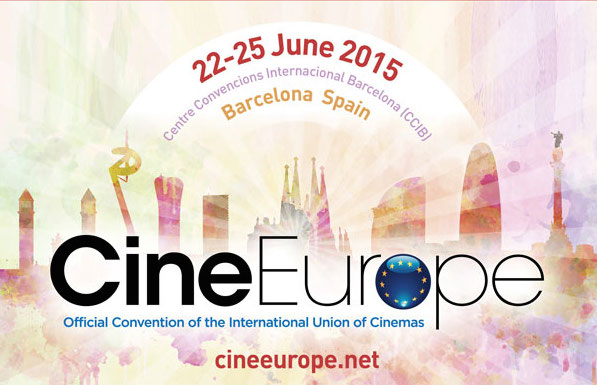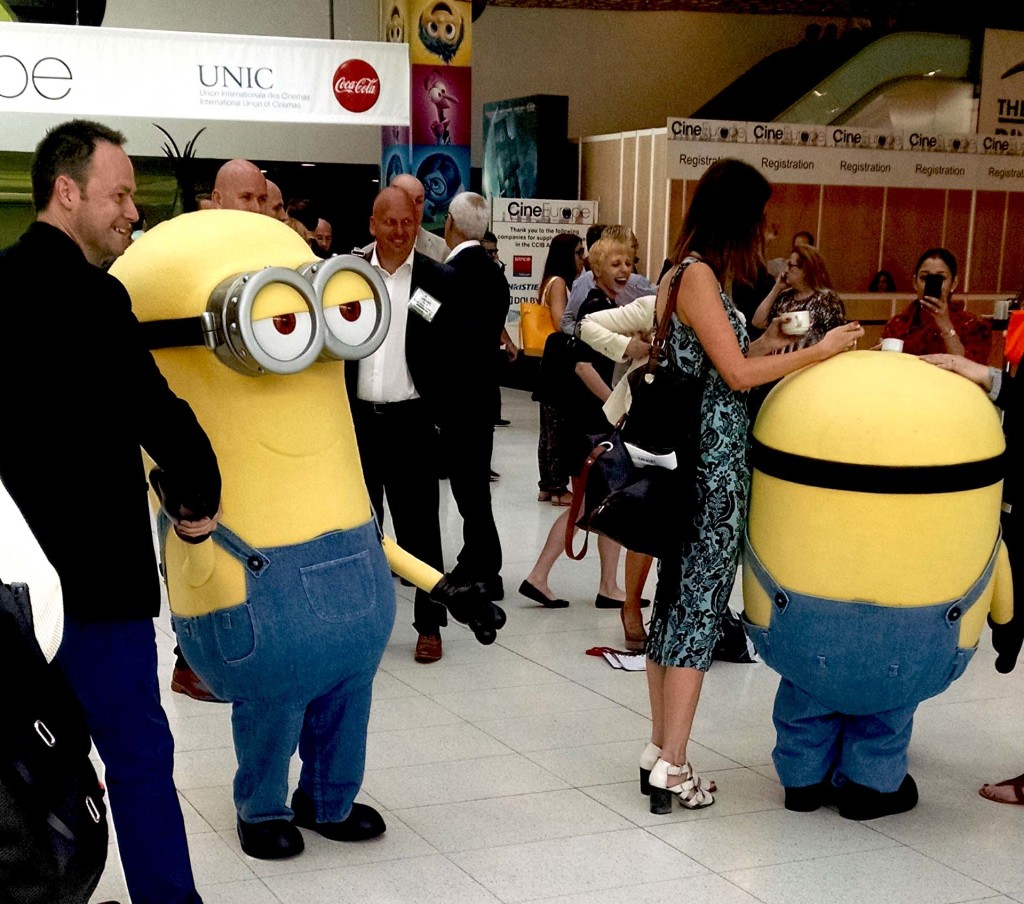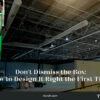
CineEurope 2015
By Jack Muffoletto, TK Architects International
July 2015
We have recently returned from CineEurope 2015 in Barcelona.
Most people we talked to were quite happy since the global box office is doing very well so far this year.
The seminars were very informative as usual and the weather was perfect.
Here are some of the key “take-away”s covered in the seminars:
- Understand and take advantage that cinema marketing, social networking and mobile devices are interconnected.
- Listen to your customer in social media settings and engage them.
- Millennials create on social networking platforms and live through social networking.
- Target different customers with small bite size trailers or micro-moments since it has been reported that our attention span is down to 8 seconds.
- Offer incentive for pre-purchasing tickets.
- Use compiled customer data in ways to increase revenue.
- Change and fit your brand to fit the customer. The internet is the route.
- Provide more than just a movie, provide a movie-going experience.
- Harness post-movie immediate response. 46% of social media users discuss movies on social networks after seeing a film.
- Interactivity drives engagement. It is a 2-way street that increases loyalty and revenue.
“Provide more than just a movie, provide a movie-going experience.”
In order to keep people coming back to the cinema and to ward off the much talked about threats of piracy, short release windows, Netflix, indifference, new behavioral patterns of movie-goers, etc., you must first understand your customer. There is a lot of survey information available, some of which is summarized here.
Why go to the movies?
- Film content: 90% responded positively
- Technology: 90% responded positively
- Atmosphere of the cinema: only 9% responded positively. This is directly related to architecture.
The survey information also shows this Food and Beverage note:
- Over 70% of VIP customers purchase F & B
So what are people doing to change of the low positive rating for the Atmosphere of the cinema considering the architecture?
- Make the experience meaningful
- Stage an experience like: Starbucks, Planet Hollywood, Hard Rock Café, Disney

CineEurope 2015 visitors are enjoying meeting special guests – Minions, and learning that the cinema going process is an experience, and a fun one for sure!
- Wrap the experience around the movie
- More and more places you may not consider, are using movies to improve their experience: retail, airport, swimming pools, bars, hotels, etc.
- Create an immersive experience
- Themed experiences must be well defined
- Provide cues to strengthen the experience: red carpet, uniform, murals, etc.
- Eliminate negative cues. It takes 3 positives to balance 1 negative
- Minimize waiting or provide entertainment while waiting
- Mix in memorabilia as a physical reminder; provide opportunity to impulse buy something like you would buy a tee shirt at a concert
- It is more impactful to engage all 5 senses
- You will come to the cinema more often if you enjoy yourself
Further studies address human behaviors. For example:
Drivers for going to the movies:
- Emotional motivation
- Laugh and cry in a group
- Indulge
- Relax
- Film content
- Technical quality
- There is a need to educate on what the technology benefits mean to the consumer because there are many, which may cause confusion: 2D, 3D, immersive sound, large premium format, high frame rates, etc.
Barriers for not going to the movies:
- Time pressure
- There are a lot of things that consumer’s would list for things to do in their spare time. Recently, “going to the movies” has moved down the list.
- In addition, people value their time and choose to do 4 or 5 things in an evening out rather than just a movie or just dinner and a movie. Doing just a 2 hour movie doesn’t satisfy needs.
- As a solution, exhibitors are providing at their facilities multiple entertainment options including those on the consumer’s list above “going to the movies”
- Expensive
- Other responsibilities
- Film content
- Movie times
“True of the current movie customer generation: always ON. Watching a movie in the cinema causes always OFF…”
True of the current movie customer generation:
- Always ON. Watching a movie in the cinema causes always OFF. The customer can’t be OFF because they are always working on their next experience.
- Perhaps if the presentation is so beautifully immersive, others will not notice any disturbance from an illuminated mobile device screen.
- It is an On Demand world, no waiting. The process of going to the cinema involves waiting.
- The customer is used to a never ending journey. They can continually click on more things. At the movies, after the content is done, it’s over
Food & Beverage enhancements have been a positive revenue generator. What are the issues to entice more to buy F & B?
- Barrier: 58% say price
- Solution: Provide affordable offers to drive more transactions
- Barrier: Lack variant
- Solution: Communicate offers on every occasion
- Barrier: Not necessary
- Solution: Make irresistible indulgence by showcasing and making convenient packaging to take to your seat
- Solution: Make F & B the link to going to a movie
- Solution: Make the food offer part of the experience
- Solution: Incentives to buy more with “bundles”, “family size”; up-sizing does not work well anymore
- Solution: Be creative. There is one exhibitor that sells a 10 oz. drink to have a low cost offer to prevent smuggling; they also have a 20 oz. drink as a medium size to avoid sharing.
Digital Marketing is the use of mobile and social networking to attract movie goers to the cinema. Consumer shifts lead to marketing shifts.
- Interact with the consumer day by day, continuously
- Teens move fast digitally and interact 100’s of times per day
- Need to get into the more personal, intimate space of the consumer where they are interacting with others by showing relevance, your experience and displaying trust.
- Mobile 1st
- Content is fuel
- Social fluency; always ON dialogue
- Get more data from the customer to provide more customization
- Leverage data
- Bring best solutions to customer
The ideal sales scenario for Millennial business:
- Order with your mobile device before you get to the movie theater
- Scan your mobile device as you enter the movie theater
- The movie theater knows you are there
- Go collect your food and beverage
Dynamic Pricing:
- Reward early buying online; if you buy late and want a good seat you pay more
- Or, start pricing at say, $10; if selling great and not many seats left, automatically re-price for $12; if not selling seats, automatically re-price for $8
- Like the airline industry; choices of where to sit and a price mix of how much you are willing to pay at any given time.
Tips and Tricks for revenue growth:
“Multi-sensory retail: people buy with their eyes and smell. Also consider sound and lighting to set a mood…”
- Multi-sensory retail
- People buy with their eyes and smell
- Also consider sound and lighting to set a mood
- Meet all price points
- Provide a multi-purpose space with WiFi available
- Use A/V, make edgy and fun
- Make all spaces part of the experience including toilet rooms
- Have staff provide a welcome greeting as the first impression and a goodnight sent off as the last impression
- Self-serve to eliminate a queue; it “seems” faster; queue causes stress thinking about getting to your seat.
- People buy more when they are relaxed
- Self-serve causes impulse buys
- “Gamification” of everyday operations to engage teens
- Promotions which are simply re-packaging
- Any idea like a refill bucket, has high perceived value
- Digital menu boards to show product in several simple, logical ways which are flexible to change from a Saturday night offering to a Sunday afternoon promotion.
The lesson learned is to make sure you are engaging your cinema audience using the latest tools for the newest behavioral patterns of the customer.



